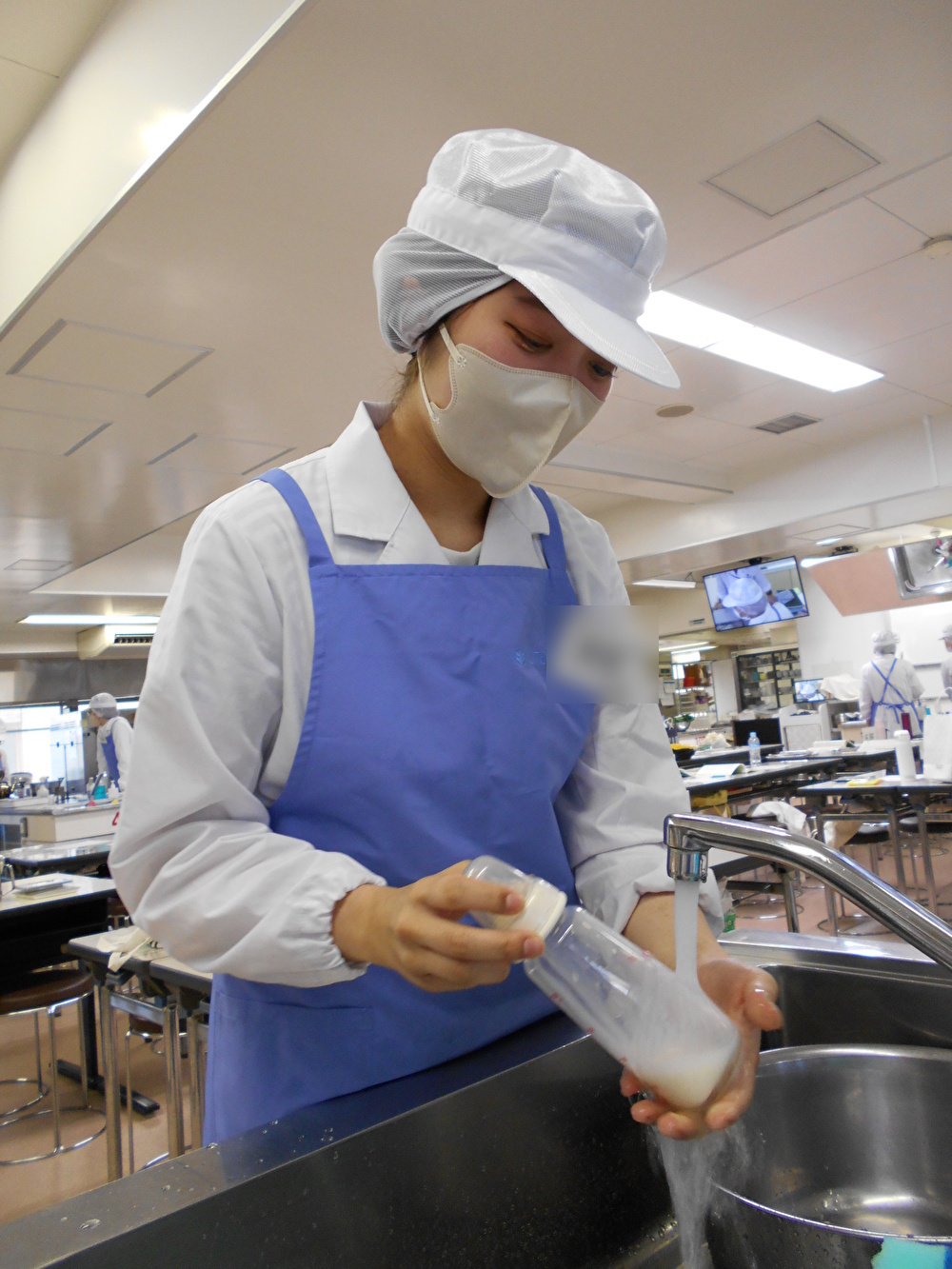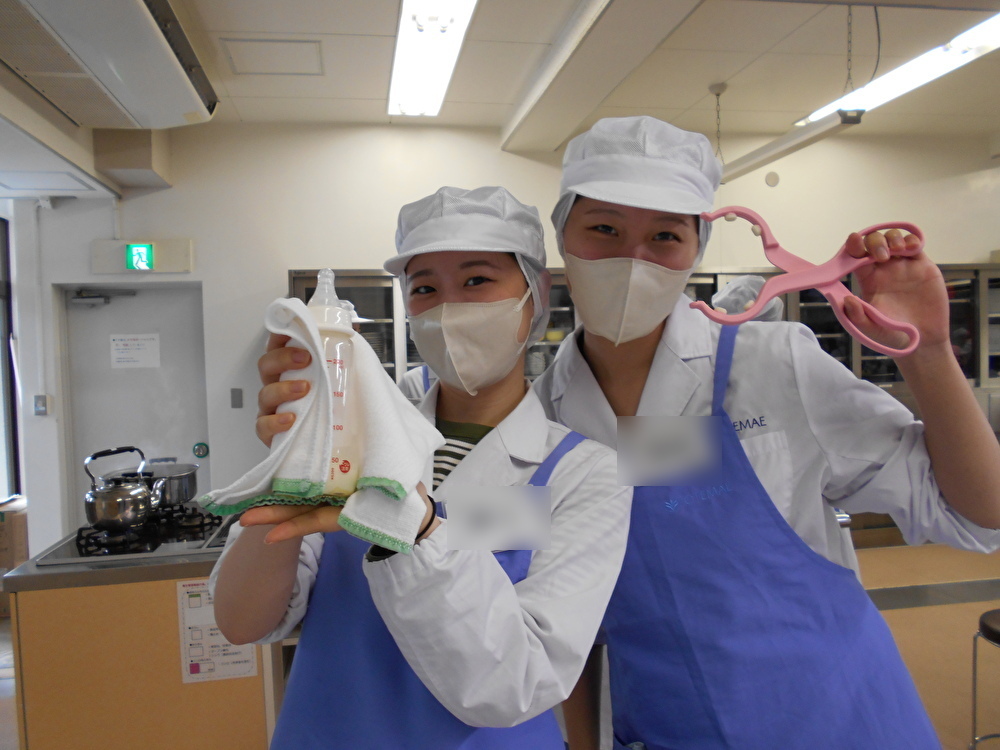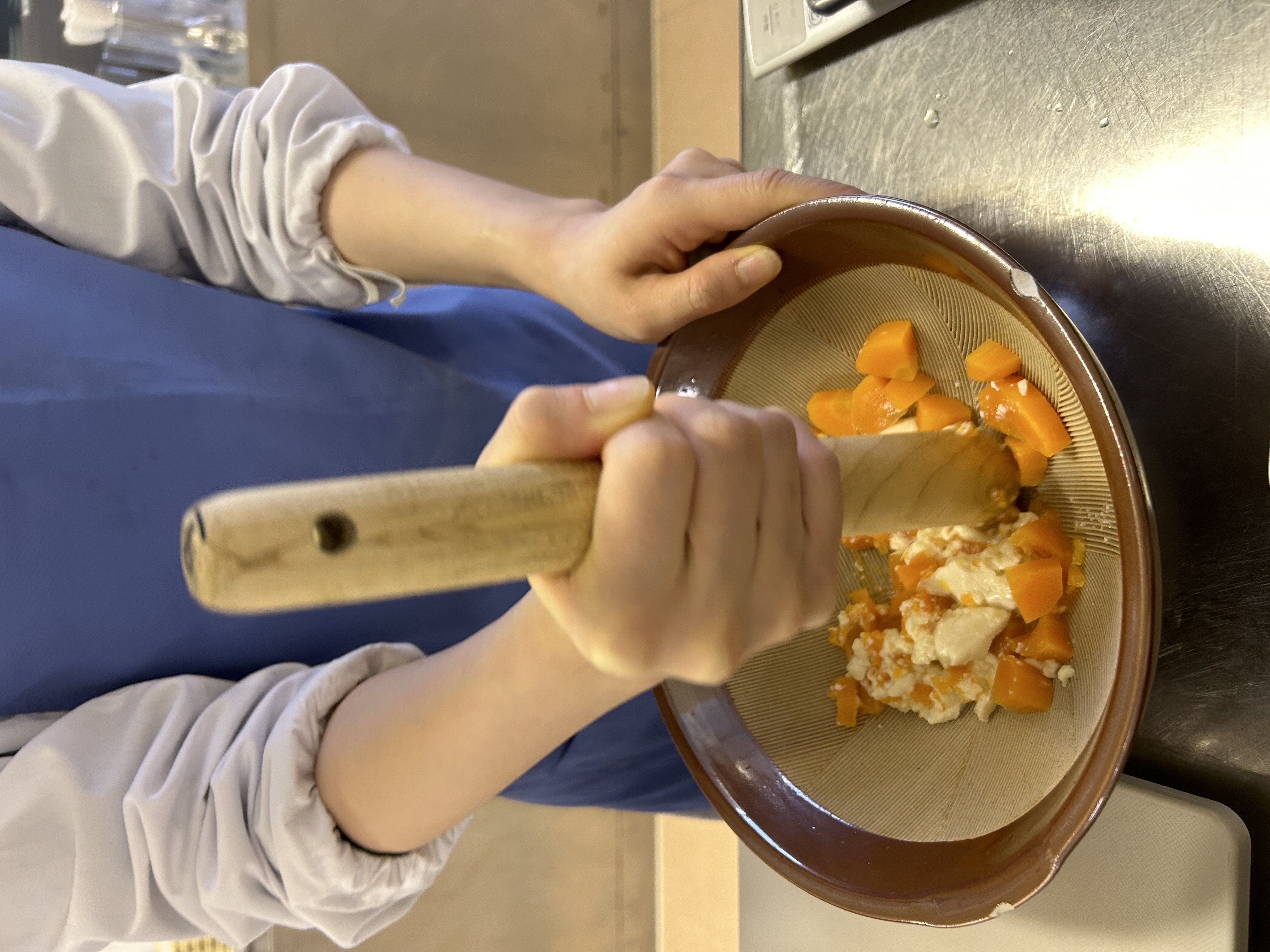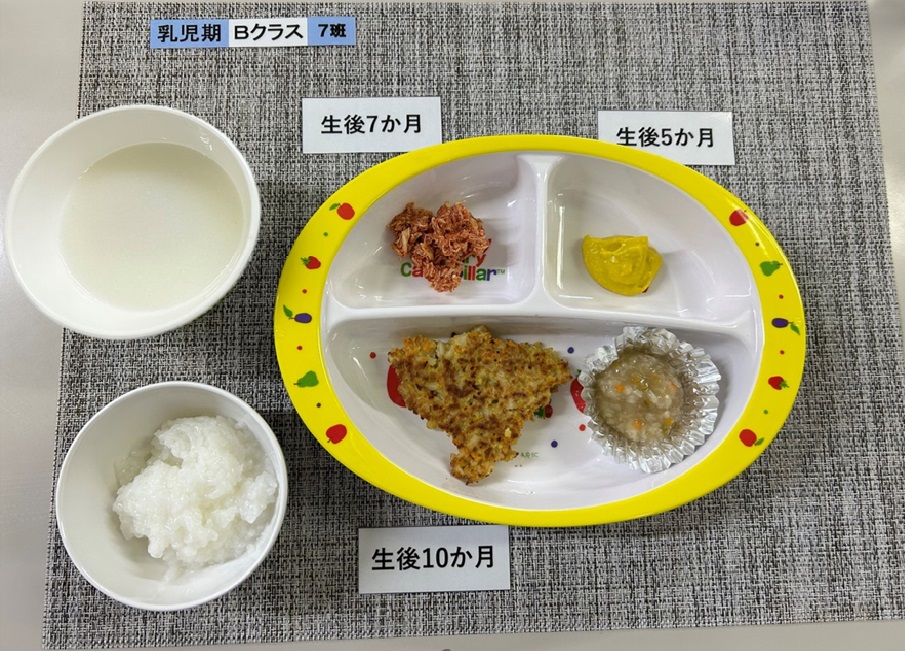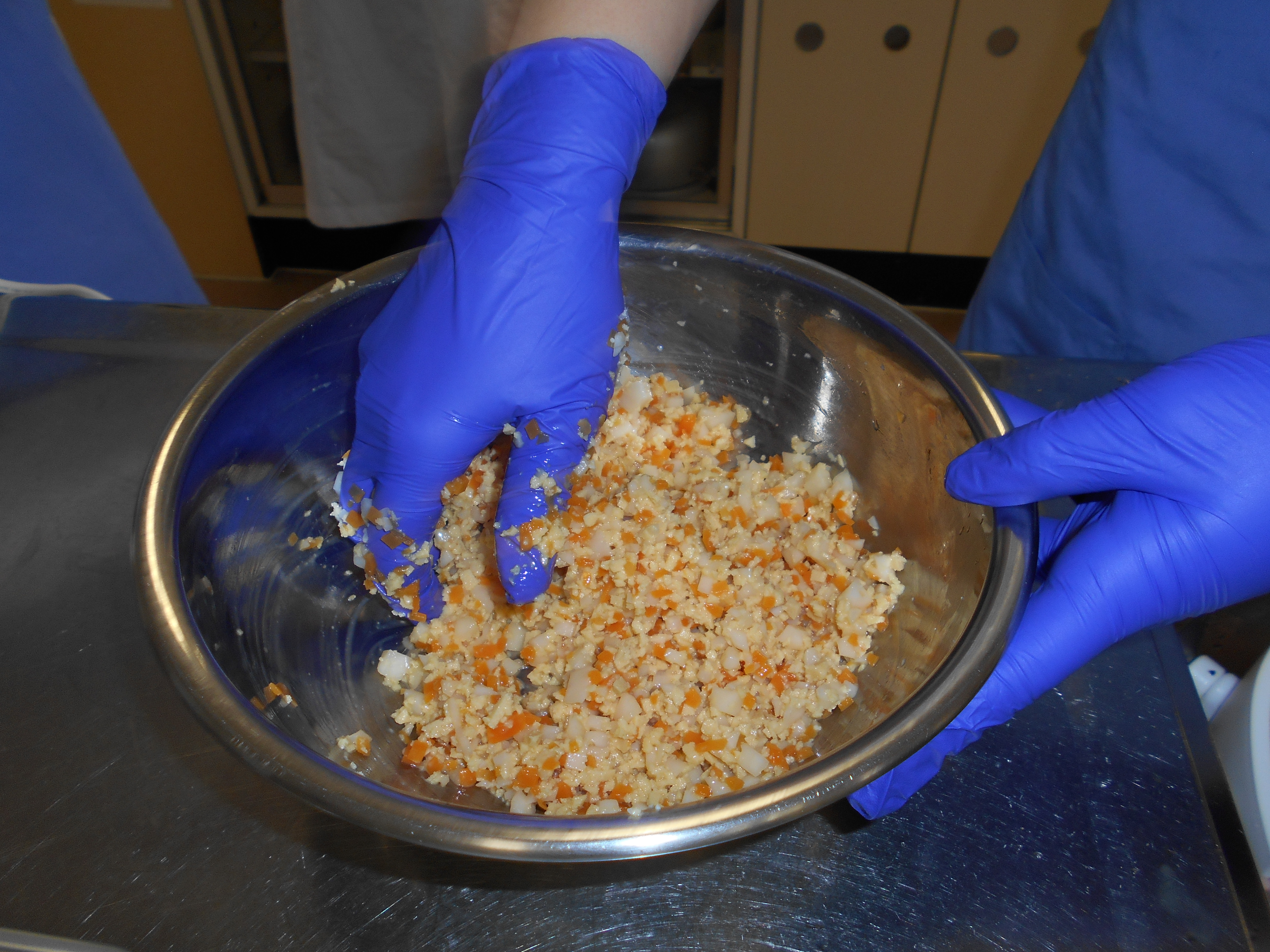
News & Press Releases
[Faculty of Health and Nutrition] Introducing the Applied Nutrition Training for 3rd Year Students
2024.07.09
- Faculty of Health and Nutrition
In the applied nutrition training, we start with the "pregnancy period", then move on to "childhood", "adulthood", and "elderly life".
You will learn to understand the characteristics of each life stage and apply them to nutritional care and management.
The classes mainly focus on the life stages of "pregnancy," "infancy," "toddlerhood/school age," and "elderly years."
This course is aimed at athletes and will teach about nutritional care and management during exercise and sports.
In the lecture, after learning about the characteristics of each, the students were given examples of subjects and asked to consider their health conditions and living environments.
Students create a nutritional care plan and then use it to plan the menu and actually cook the food during the practical training.
This time we will be doing a practical class on infancy.
Each group is made up of 4-5 people, and one of the five practical sessions is always a menu representative.
You will be responsible for cooking the menu you create and creating the orders.
Since this time the baby was still an infant, we also administered formula milk.
After the teacher's demonstration, the students also prepared the formula and tasted it.
During the practical training, each group receives an explanation from the menu representative and then begins cooking.
For baby food, the process is a little different from normal cooking, such as cutting and mashing.
Although some of the students seemed unfamiliar with the task, they worked together in groups and made efforts to get the job done.
When the students saw the finished dish, they said things like, "The amount was too much..." or when they tasted it, they said things like, "It's too bland after all."
It seemed like there were a variety of opinions.
They will also sample commercially available baby foods and learn about the differences in texture and taste between them and the baby food they make themselves.
In addition, when preparing meals for infants, it is important to serve them on children's tableware so that the portions cooked are appropriate.
You can check it more clearly.
After the practical training, the students will evaluate the menu in groups and summarize the contents of each session in a PowerPoint presentation.
During the final lesson, you will make a presentation to the class and feedback will be provided.
Source: Laboratory of Culinary Research
